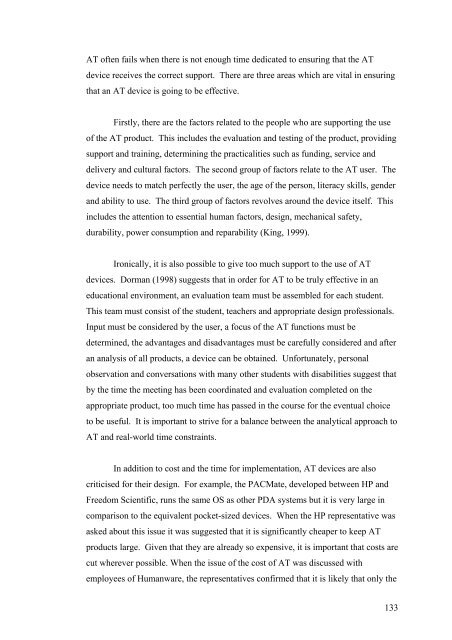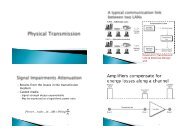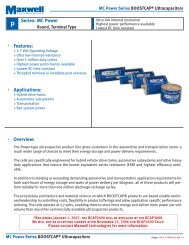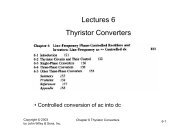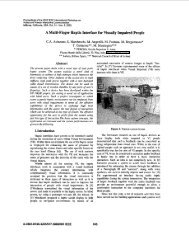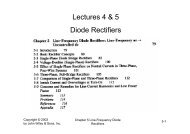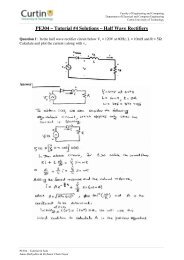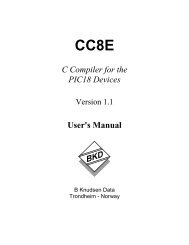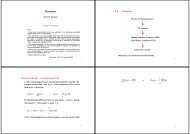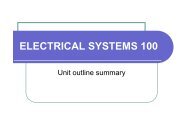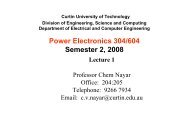2007 PhD Thesis Final Revised.pdf - Curtin University
2007 PhD Thesis Final Revised.pdf - Curtin University
2007 PhD Thesis Final Revised.pdf - Curtin University
You also want an ePaper? Increase the reach of your titles
YUMPU automatically turns print PDFs into web optimized ePapers that Google loves.
AT often fails when there is not enough time dedicated to ensuring that the AT<br />
device receives the correct support. There are three areas which are vital in ensuring<br />
that an AT device is going to be effective.<br />
Firstly, there are the factors related to the people who are supporting the use<br />
of the AT product. This includes the evaluation and testing of the product, providing<br />
support and training, determining the practicalities such as funding, service and<br />
delivery and cultural factors. The second group of factors relate to the AT user. The<br />
device needs to match perfectly the user, the age of the person, literacy skills, gender<br />
and ability to use. The third group of factors revolves around the device itself. This<br />
includes the attention to essential human factors, design, mechanical safety,<br />
durability, power consumption and reparability (King, 1999).<br />
Ironically, it is also possible to give too much support to the use of AT<br />
devices. Dorman (1998) suggests that in order for AT to be truly effective in an<br />
educational environment, an evaluation team must be assembled for each student.<br />
This team must consist of the student, teachers and appropriate design professionals.<br />
Input must be considered by the user, a focus of the AT functions must be<br />
determined, the advantages and disadvantages must be carefully considered and after<br />
an analysis of all products, a device can be obtained. Unfortunately, personal<br />
observation and conversations with many other students with disabilities suggest that<br />
by the time the meeting has been coordinated and evaluation completed on the<br />
appropriate product, too much time has passed in the course for the eventual choice<br />
to be useful. It is important to strive for a balance between the analytical approach to<br />
AT and real-world time constraints.<br />
In addition to cost and the time for implementation, AT devices are also<br />
criticised for their design. For example, the PACMate, developed between HP and<br />
Freedom Scientific, runs the same OS as other PDA systems but it is very large in<br />
comparison to the equivalent pocket-sized devices. When the HP representative was<br />
asked about this issue it was suggested that it is significantly cheaper to keep AT<br />
products large. Given that they are already so expensive, it is important that costs are<br />
cut wherever possible. When the issue of the cost of AT was discussed with<br />
employees of Humanware, the representatives confirmed that it is likely that only the<br />
133


